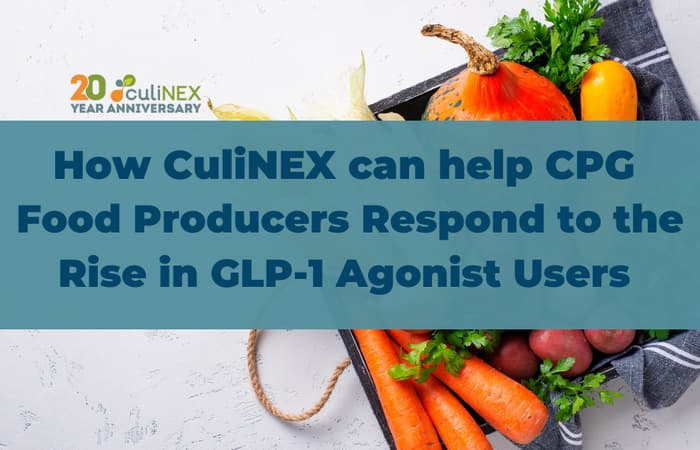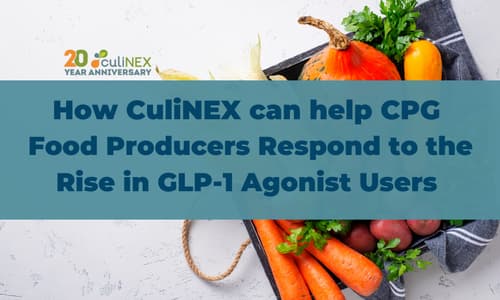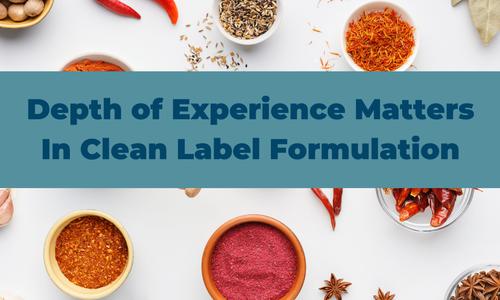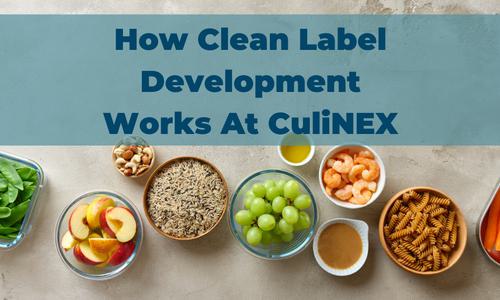
How CuliNEX can help CPG Food Producers Respond to the Rise in GLP-1 Agonist Users
To treat Type 2 diabetes and manage weight loss, as many as 15 million adults currently use GLP-1 agonist drugs like Ozempic and Wegovy. These medications are causing millions to lose significant pounds by on the scale by not only changing how much they are eating‚ but by changing what they are eating. Consumers who take GLP-1 agonists are looking for new foods and beverages that are in smaller portions and nutrient-dense.
This medication is creating an enormous opportunity for Consumer Packaged Goods (CPG) companies, as well as food boards and commissions. With a deep understanding of nutrition and Clean Label formulation, CuliNEX can help bring these new Clean Label GLP-1–friendly options to market in efficient, cost-effective ways.
How do GLP-1 Medications Work?
“The primary function of GLP-1 drugs is to regulate blood sugar levels. But, they also send signals to the brain blocking food noise,” said Sarah Fitzgerald, Senior Culinoligist at CuliNEX. As a result, people using drugs like Ozempic and Wegovy consume 17-20% fewer calories overall in their first few months using these medications. By reducing calorie consumption, and making them feel too full to eat, nutrient-dense foods become important in maintaining a healthy, balanced diet.
CuliNEX can help CPG companies develop, formulate, and bring to market innovative GLP-1–friendly products.
As GLP-1 users experience reduced hunger and altered food preferences, their shopping habits are changing. Let’s take a look at some of the types of new products that users of GLP-1 agonists are seeking.
High-Protein, Low Sugar
“People on these medications need protein. One behavior for healthier eating habits is for consumers to shop along the outer perimeter of the store for fresh produce and proteins,” says Fitzgerald. This creates opportunities for egg and meat producers, as well as CPG products that use dairy. “Keto ice cream and low fat cheeses are satiating and provide nutrients,” said Fitzgerald, “ a lot of GLP 1 folks are looking for satiating foods with protein and fat.
CuliNEX performs technical reviews and feasibility studies to discover ways to enhance current brands or formulate new products with added protein and reduced sugar. “We can take a current formula and conduct a feasibility assessment to understand how much we can push the levers of protein/sugar/fat/etc. for it to become more GLP-1 friendly without creating an entirely new product.”
Added Fiber
The side effects of these drugs can sometimes affect their digestion. “Many people taking these medications have a tough time with gut motility as the drug slows digestion creating a feeling of fullness,” said Fitzgerald. “Some feel nauseous. Some feel weak. Some feel dehydrated. Some feel stomach cramps.” This makes them more selective about their food choices.
What can CPG companies do to help consumers seeking GLP-1 foods? “Beverage companies and dairies could think about adding fiber to their beverages, like chia or flax seeds,” said Fitzgerald. Packaged food companies can start thinking about foods that soothe and are easy to consume, “like bone broths with added insoluble fiber to aid gut motility ,” said Fitzgerald. “We could conduct a category review coupled with a technical review to understand what is on brand and what is feasible.
Nutrient-dense
Even though people on GLP-1 medications are less motivated to eat, they still need to maintain a balanced diet that includes essential nutrients like protein, fiber, and micronutrients. “You can do anything with a snack bar, or little bite-sized snacks,” says Fitzgerald. Beverages can be a new source of nutrients for people who don’t like eating dense foods. “Carbonated beverages and teas with added nutrients could fit this bill,” said Fitzgerald.
Smaller portion sizes are appealing to people with reduced appetites. CuliNEX can formulate products that offer balanced nutrition in convenient, portion-controlled formats. “Think single-serve snacks, meal kits, and smaller packaged options,” said Fitzgerald.
Re-sizing portions to be right-sized for people with lower appetites is a cost-effective way to extend your brand to users of GLP-1 medications. Smaller, well-portioned packages can help consumers gain the nutrients they need in the amount that makes them comfortable while providing enhanced margins.
FOP Labels Highlighting Nutrition and Portions
For this new market segment, clear front-of-package (FOP) labels that highlight nutritional information will be key. In addition, this aligns with the FDA’s push to improve FOP labeling so consumers can easily identify products that fit into a healthy diet.
GLP-1–friendly packaging just might be the cheapest and fastest way to serve this audience. “If a client says, ‘I'm interested in reformulating my product to be more GLP-1 friendly,’” said Fitzgerald, “I'd first tell them, “Wait, do we have to go there? Maybe it's just a packaging change. Maybe it's just marketing material. Maybe it's just putting those macros on the front of the package.’”
CuliNEX Helps CPG Companies Expand Product Lines for GLP-1 Users
CuliNEX serves its clients by not only by providing research and development, but also helping clients work cost-effectively. If that means something as simple as a label change, we can help make that happen quickly and efficiently. “You don't necessarily have to reinvent the wheel if you already have the right products in your portfolio,” said Fitzgerald. “Before we get into doing all the hard work, what's the easy path and we can help clients with that.”








